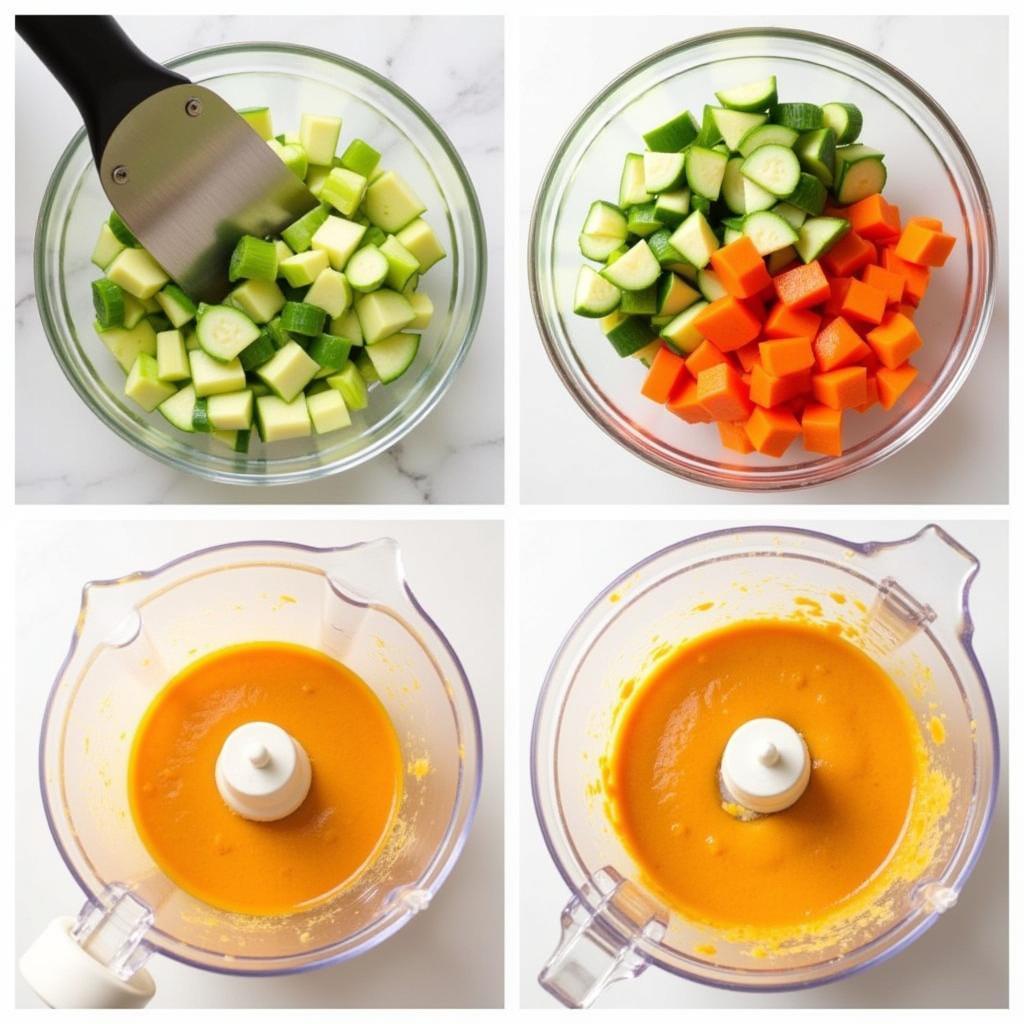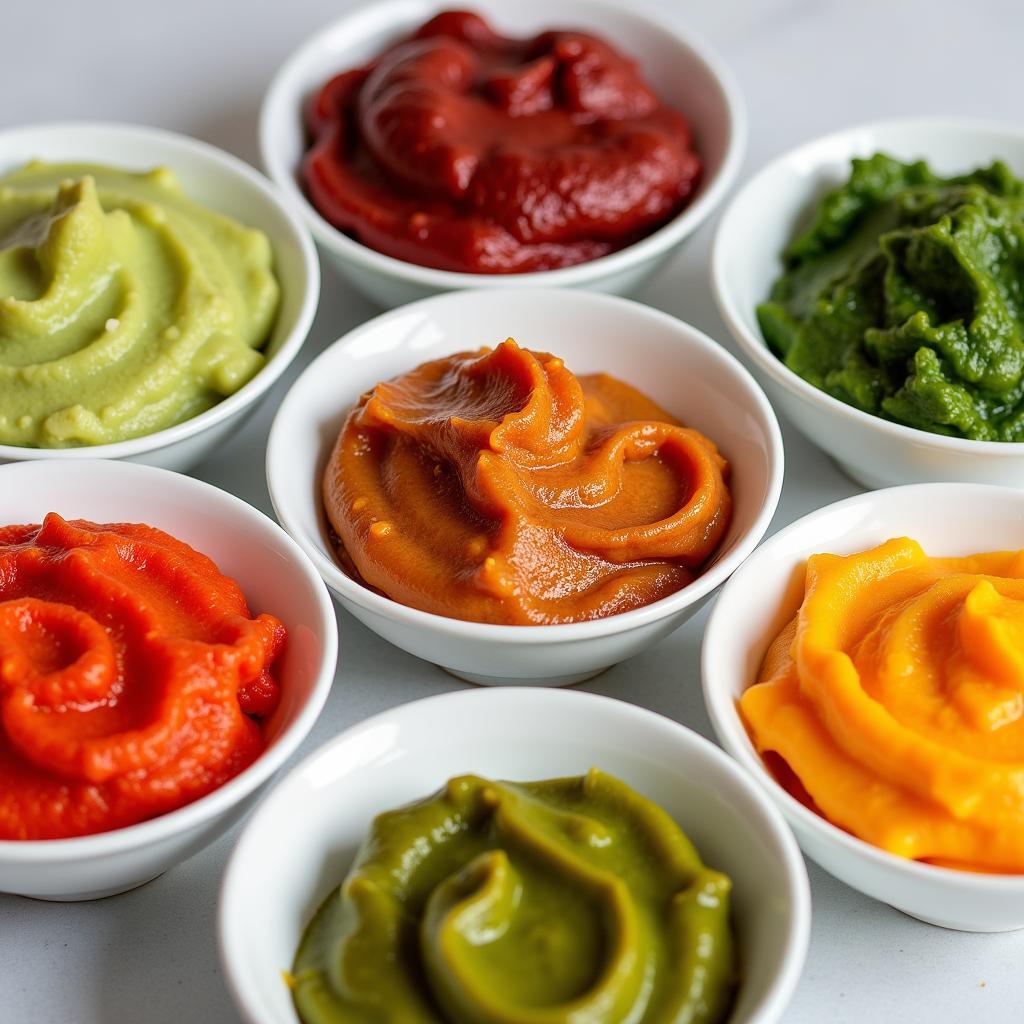Vegetable Baby Food is a cornerstone of a healthy start for your little one. Introducing a variety of flavors and textures early on sets the stage for a lifetime of healthy eating habits. From understanding the nutritional benefits to mastering simple recipes and safe storage, this guide provides everything you need to embark on this exciting journey.
Why Choose Vegetable Baby Food?
Vegetables are packed with essential vitamins, minerals, and antioxidants vital for your baby’s growth and development. Introducing them early not only provides these crucial nutrients but also helps expand your baby’s palate and acceptance of different flavors, reducing the likelihood of picky eating later on.
Starting with mild-flavored vegetables like carrots, sweet potatoes, and squash is a great way to introduce your baby to the world of solids. These vegetables are naturally sweet and have a smooth texture when pureed, making them easy for your baby to digest.
Navigating the World of Vegetable Baby Food: A Step-by-Step Guide
Making your own vegetable baby food is a rewarding experience. It allows you to control the ingredients, ensuring your baby receives the purest and freshest nutrition possible. Here’s a simple guide to get you started:
- Select fresh, organic vegetables: Choose vegetables that are in season for the best flavor and nutritional value.
- Wash and peel: Thoroughly wash and peel the vegetables to remove any dirt or pesticides.
- Steam or boil: Steaming or boiling vegetables helps retain their nutrients. Cook until tender.
- Puree or mash: Once cooked, puree or mash the vegetables to a smooth consistency. You can add a little breast milk or formula to thin the puree if needed.
 Parent steaming and pureeing fresh vegetables for baby food
Parent steaming and pureeing fresh vegetables for baby food - Store properly: Store leftover baby food in airtight containers in the refrigerator for up to three days or in the freezer for up to three months. For more tips on freezer storage, check out baby food freezer storage.
Remember to introduce one new vegetable at a time, waiting a few days to observe for any allergic reactions. If you’re looking for more information about introducing vegetables specifically, our guide on baby food vegetables offers comprehensive insights.
What are the best vegetables for starting solids?
The best vegetables for starting solids are those that are easily digestible and offer a mild flavor. Sweet potatoes, carrots, and butternut squash are excellent choices. These vegetables are naturally sweet and have a creamy texture when pureed, making them appealing to babies.
“Introducing a variety of colorful vegetables early on is key to developing a well-rounded palate,” says renowned pediatric nutritionist, Dr. Amelia Carter. “The vibrant colors not only make the food visually appealing but also signify a range of nutrients.”
Beyond Purees: Exploring Textures and Combinations
As your baby grows and develops, you can gradually introduce new textures and flavor combinations. Mashed vegetables, finely chopped soft vegetables, and even small pieces of cooked vegetables can be offered as your baby learns to chew and swallow.
Don’t be afraid to experiment with different combinations of vegetables to create exciting new flavors for your little one. Mixing sweet potatoes with carrots, or peas with green beans, can create delicious and nutritious meals. You might even find that your little one enjoys some unexpected combinations!
Addressing Common Concerns about Vegetable Baby Food
Many parents have questions about introducing vegetable baby food. One common concern is whether store-bought baby food is as nutritious as homemade. While store-bought options can be convenient, making your own allows you to control the ingredients and avoid added sugars or preservatives. If you’re wondering about the nutritional needs of other small creatures, we have a guide on best food for cichlid as well.
Another concern is dealing with picky eaters. If your baby initially refuses a new vegetable, don’t give up! It can take multiple tries for a baby to accept a new flavor. Offer the vegetable again a few days later, and be patient. Eventually, your little one will likely develop a taste for it.  A variety of colorful vegetable purees in small bowls
A variety of colorful vegetable purees in small bowls
Conclusion
Introducing vegetable baby food is a significant milestone in your baby’s journey to healthy eating. By following this guide, you can confidently navigate the world of vegetable baby food, providing your little one with the essential nutrients they need for a thriving start in life. Remember, patience and persistence are key. Enjoy the process of exploring new flavors and textures with your little one, and celebrate each step along the way. Continue exploring the world of baby food, including intriguing questions like can guinea pigs eat baby food.
FAQ
- When should I introduce vegetable baby food?
- What are the signs my baby is ready for solids?
- How do I know if my baby is allergic to a vegetable?
- Can I freeze homemade vegetable baby food?
- How do I introduce new textures to my baby?
- What are some tips for dealing with a picky eater?
- How much vegetable baby food should my baby eat?
Have other questions? Check out our higgins cockatiel food guide for information on bird nutrition.
Need further support? Contact us at Phone Number: 02437655121, Email: minacones@gmail.com, or visit our address: 3PGH+8R9, ĐT70A, thôn Trung, Bắc Từ Liêm, Hà Nội, Việt Nam. Our customer care team is available 24/7.